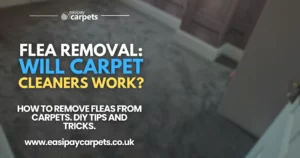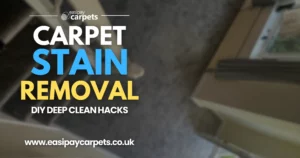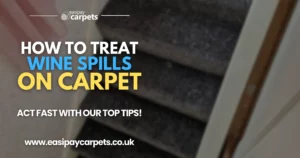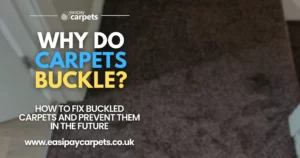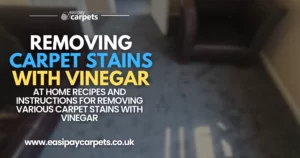

A Beginner’s Guide to Stretching Carpets at Home
How to Stretch Carpets: A DIY Guide
Over time, carpets can develop wrinkles, bubbles, or loose areas, detracting from their appearance and even posing tripping hazards. Stretching your carpet can resolve these issues, extending its lifespan and restoring its smooth, professional look. While many people call professionals for this task, stretching your carpet yourself is entirely possible with the right tools and techniques.
This step-by-step guide will walk you through the process of stretching carpets like a pro.
Why Do Carpets Need Stretching?
Carpets can lose their tautness for several reasons, including:
- Improper Installation: If the carpet wasn’t stretched tightly during installation, it may loosen over time.
- Heavy Traffic: Frequent use, especially in high-traffic areas, can cause the carpet to shift or buckle.
- Humidity and Temperature Changes: Fluctuations in humidity or temperature can cause the carpet fibres to expand and contract, leading to ripples.
- Wear and Tear: Aging carpets naturally lose tension as the backing and padding degrade.
Tools You’ll Need
To stretch your carpet effectively, gather the following tools:
- Carpet Stretcher: Also known as a power stretcher, this tool is essential for larger areas.
- Knee Kicker: A smaller tool used for stretching carpet in tight spaces and along edges.
- Utility Knife: For trimming excess carpet.
- Pliers: To pull and manipulate the carpet.
- Staple Gun: For securing the carpet to the tack strips.
- Tape Measure: To ensure precise measurements.
- Gloves: To protect your hands during the process.
Step-by-Step Guide to Stretching Carpets
Step 1: Clear the Room
Remove all furniture and objects from the room. A clear workspace ensures you can stretch the carpet evenly without obstructions.
Step 2: Inspect the Carpet
Examine the carpet for wrinkles, bubbles, or loose areas. Take note of the spots that need the most adjustment.
Step 3: Detach the Carpet Edges
Use pliers to lift the carpet edges from the tack strips along the walls. Work carefully to avoid damaging the carpet or the strips.
Step 4: Set Up the Carpet Stretcher
- Assemble the power stretcher according to the manufacturer’s instructions.
- Position the stretcher at one end of the room, with the head near the wall and the tail extending toward the opposite side.
- Adjust the length of the stretcher to span the room.
Step 5: Stretch the Carpet
- Push the stretcher handle to tighten the carpet. You should see the wrinkles or bubbles flatten out as the carpet stretches.
- Secure the stretched carpet onto the tack strip using a staple gun or by pressing it firmly into place with the stretcher’s teeth.
Step 6: Use the Knee Kicker for Edges
- For areas near walls or tight spaces, use a knee kicker to stretch the carpet.
- Position the kicker’s padded end against your knee and the teeth against the carpet. Use your knee to apply pressure, stretching the carpet toward the tack strip.
Step 7: Trim Excess Carpet
- Once the carpet is stretched and secured, use a utility knife to trim any excess material along the edges.
- Tuck the trimmed edges neatly under the baseboards for a polished look.
Step 8: Repeat as Needed
Continue stretching the carpet section by section until the entire area is smooth and taut.
Step 9: Reinstall Furniture
After ensuring the carpet is secure and wrinkle-free, return furniture and décor to the room.
Tips for a Successful DIY Carpet Stretching
- Practice on a Small Area: If you’re new to carpet stretching, start with a smaller room to build confidence.
- Work in Sections: Stretch one section at a time for better control and precision.
- Use the Right Tools: Investing in a carpet stretcher and knee kicker ensures professional results.
- Don’t Overstretch: Overstretching can damage the carpet backing and reduce its lifespan.
When to Call a Professional
While DIY carpet stretching is feasible, some situations may require professional assistance:
- Severe Damage: If the carpet backing or fibres are torn, a professional can repair or replace the damaged area.
- Large Areas: For expansive spaces, a professional’s experience and equipment may save time and effort.
- Special Materials: Delicate or high-end carpets may need specialised care to avoid damage.
Conclusion
Stretching your carpet is an effective way to restore its appearance and functionality without the cost of professional services. By following this DIY guide and using the right tools, you can eliminate wrinkles and bubbles, making your carpet look as good as new. With a bit of patience and effort, you’ll enjoy a smooth and polished floor for years to come.
Easipay Carpets can help you get brand new flooring without the high up-front cost – by simply letting you spread the cost of the flooring over time instead. There’s no interest on our plans so you aren’t spending a penny more than you would buying it outright and we include underlay, door trims, carpet grippers and laminate beading for free. Prices start from just £10 per week!
It starts with a free home appointment and quote, to get booked in at a time that suits you, tap the “Get Started” button below and fill out the contact form!
Still Got Questions? Here's 10 FAQs!
Wrinkles, ripples, or bubbles in the carpet are signs that it needs stretching.
A knee kicker can be used for small areas, but a power stretcher is recommended for larger rooms.
Buckling is often caused by improper installation, humidity changes, or heavy foot traffic.
With the right tools and guidance, DIY carpet stretching is manageable for most homeowners.
Most carpets can be stretched, but very old or damaged carpets may require replacement.
Carpet stretchers can range from £50 to £150. Some hardware stores also offer rentals.
Yes, removing furniture ensures an even stretch across the entire room.
Most carpets only need stretching once during their lifespan unless improperly installed.
Overstretching can damage the carpet backing, causing it to tear or lose durability.
A utility knife with a sharp blade is best for precise and clean cuts.
